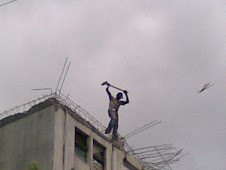Through the centuries,different technologies have done their best. Stones and potshards dropped in Greek vases gave way to paper ballots dropped in sealed boxes. Mechanical voting booths, punch cards, and then optical scan machines replaced hand-counted ballots. New computerized voting machines promise even more efficiency, and Internet voting even more convenience.
I was NOT HAPPY with the way Voting happened this year. At polling booth, my identity was checked and was made to stand in front of Electronic Voting Machine. EVM had number of buttons against each candidate’s name. When I selected the candidate by pressing the button, a beep sound came and red colour light flashed. That’s the way I cast the vote.
But, where did my vote go? I was told that the machine captures it.
I disagree. EVM MUST GIVE ME ACKNOWLEDGEMENT. THE WAY IT HAPPENS IN ATM or Point-Of-Sale (POS) or Internet or mobile banking transaction.
If you withdraw cash from ATM, the machine gives the transaction slip that confirms successful completion of debit transaction. Similarly, POS terminal while shopping provides me charge slip. Even the Internet banking transaction generates a receipt that can be printed.
Hence its must that these Electronic Voting machine (EVM) provide paper slip which give the details about the constituency, serial number of circuit board used in the Electronic voting machine, Date & Time stamp and a reference number.
Why can’t this be done?
But in the rush to improve speed and scalability, accuracy has been sacrificed. And to reiterate: accuracy is not how well the ballots are counted by, for example, a punch-card reader. It’s not how the tabulating machine deals with hanging chads, pregnant chads, or anything like that. Accuracy is how well the process translates voter intent into properly counted votes.
Technologies get in the way of accuracy by adding steps. Each additional step means more potential errors, simply because no technology is perfect.
Bugs in software are commonplace, as any computer user knows. Computer programs regularly malfunction, sometimes in surprising and subtle ways. This is true for all software, including the software in computerized voting machines.
Another issue is that software can be hacked. That is, someone can deliberately introduce an error that modifies
Unfortunately, electronic voting machines -- although presented as the solution -- have largely made the problem worse. This doesn’t mean that these machines should be abandoned, but they need to be designed to increase both their accuracy and people trust in their accuracy. This is difficult, but not impossible.
The Election Commission has spent money on new voting technology (EVM), it makes sense to spend it on technology that makes the problem easier instead of harder.
Also, If the credibility of the electoral process is to be ensured, pre- and post-election checks of the software now fused onto the chips of the EVM’s is a must.
Thanks to Mr. Omesh Saigal (a 1964 batch IAS officer) whose presentation has forced the Election Commission to now officially taken up the investigation of charges of rigging and fraud through the Electronic Voting Machines.
Election Commission must take all necessary measures to clear doubts about use of EVMs before coming election in Maharashtra or lets revert to paper ballot. Many countries in the world, which were using EVMs, have reverted back to ballot papers and these included developed countries, with Germany being the latest example.
These are serious issues and if we want to strengthen our democracy then we should consider the matter very seriously. Forward this information to atleast 10 people. Let the truth be out and common man benefit.
Jul 18, 2009
Electronic Voting Machine (EVM): Does it translate voter intent into final tally?
Subscribe to:
Comments (Atom)
.jpg)
